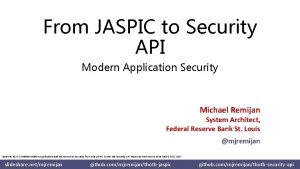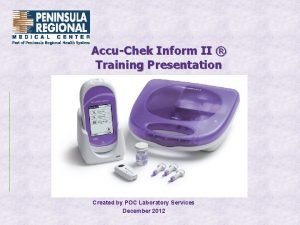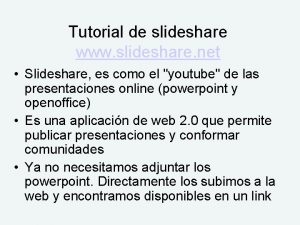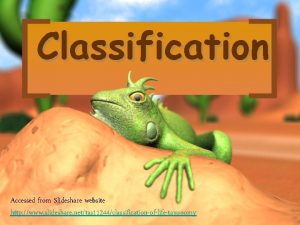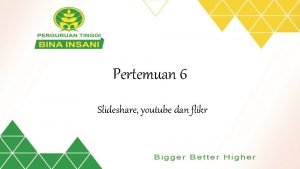A Quick Guide to Paragraphs http www slideshare







- Slides: 7

A Quick Guide to Paragraphs

http: //www. slideshare. net/chakafluk/paragraphs-and-topic-sentences-14860267

Make a Claim Every paragraph serves a purpose in your paper, and that purpose is often articulated in a topic sentence. The goal of your paragraph should be supporting, defending, or explaining that topic sentence. EXAMPLE: Shakespeare makes use of subtle wordplay to bring to light the true nature of the lovers’ affair. In line one, the dark lady’s insistence that she is “made of truth” (1), is a subtle pun, showing the sharp contrast between a woman in an affair and an innocent and truthful maid. Another pun and entendre in line two confirms the assumption that the woman is unfaithful when the speaker says “she lies” (2), indicating both verbally lying to the speaker and physically lying, or sleeping, with other men. Wordplay continues to tie together the idea of the lovers’ selfseeking, depressing, ulterior motives in line five, when the pun “vainly” (5) is used to indicate both the speaker struggling in vain to convince his lover of his youth and also the vanity behind the couple’s lies. They are vain in their attempts to turn away from the truth and they use each other to confirm virtues which they no longer possess, creating an empty and selfish love. Through wordplay, the lovers mutually overlook deceit in order to flatter themselves and fulfill their own self-interests. Your claim should act as a mini-thesis, which can be defended; ideally, your paragraph’s topic sentence will connect back to your thesis in a clear and direct manner. This way, your reader will be able to trace how your argument is building upon your thesis. http: //allrecipes. com/recipe/233652/homemade-hamburger-buns/

Development Now that you have something to defend - defend it! Bring in some evidence, whether a quote, a paraphrase fact, a synopsis, etc. This could be considered the “meat” of the paragraph (literally, but also metaphorically in keeping with our hamburger analogy!) The development and details of your supporting sentences should ideally follow some sort of pattern (chronological, general to specific, specific to general, etc. ) Note the chronological order of the ideas in the example paragraph. EXAMPLE: Shakespeare makes use of subtle wordplay to bring to light the true nature of the lovers’ affair. In line one, the dark lady’s insistence that she is “made of truth” (1), is a subtle pun, showing the sharp contrast between a woman in an affair and an innocent and truthful maid. Another pun and entendre in line two confirms the assumption that the woman is unfaithful when the speaker says “she lies” (2), indicating both verbally lying to the speaker and physically lying, or sleeping, with other men. Wordplay continues to tie together the idea of the lovers’ self-seeking, depressing, ulterior motives in line five, when the pun “vainly” (5) is used to indicate both the speaker struggling in vain to convince his lover of his youth and also the vanity behind the couple’s lies. They are vain in their attempts to turn away from the truth and they use each other to confirm virtues which they no longer possess, creating an empty and selfish love. Through wordplay, the lovers mutually overlook deceit in order to flatter themselves and fulfill their own self-interests. http: //www. alisonspantry. com/index. php? route=product/product&product_id=6008

Concluding Sentence When you are ready to move onto the next paragraph, tie the current paragraph together with a solid conclusion. This concluding sentence acts as the bottom bun of your hamburger. Ideally, your concluding sentence should set up the transition to the next paragraph, but either way, try to provide closure to your paragraph. EXAMPLE: Shakespeare makes use of subtle wordplay to bring to light the true nature of the lovers’ affair. In line one, the dark lady’s insistence that she is “made of truth” (1), is a subtle pun, showing the sharp contrast between a woman in an affair and an innocent and truthful maid. Another pun and entendre in line two confirms the assumption that the woman is unfaithful when the speaker says “she lies” (2), indicating both verbally lying to the speaker and physically lying, or sleeping, with other men. Wordplay continues to tie together the idea of the lovers’ self-seeking, depressing, ulterior motives in line five, when the pun “vainly” (5) is used to indicate both the speaker struggling in vain to convince his lover of his youth and also the vanity behind the couple’s lies. They are vain in their attempts to turn away from the truth and they use each other to confirm virtues which they no longer possess, creating an empty and selfish love. Through wordplay, the lovers mutually overlook deceit in order to flatter themselves and fulfill their own self-interests. https: //www. wendys. com/en-us/hamburgers/pretzel-bacon-cheeseburger

Going to a New Paragraphs are often 5 -8 sentences long, but that is not necessarily a requirement. When questioning whether it is time to move onto a new paragraph, ask yourself the following: → Am I ready to move onto a new idea/make a new claim? → Is this one getting very long? Will my reader need a “break”? http: //www. louisethompson. com/6 -signs-you-need-a-break/

Cohesion Each paragraph should focus around one idea or claim. As soon as you move onto a new topic, so too should you move onto a new paragraph. Purdue OWL suggests using bridges: “Logical bridges The same idea of a topic is carried over from sentence to sentence Successive sentences can be constructed in parallel form Verbal bridges Key words can be repeated in several sentences Synonymous words can be repeated in several sentences Pronouns can refer to nouns in previous sentences Transition words can be used to link ideas from different sentences” https: //owl. english. purdue. edu/owl/resource/606/01/ http: //www. accueildejour. ch/la-federation/qui-sommes-nous/comite. html


